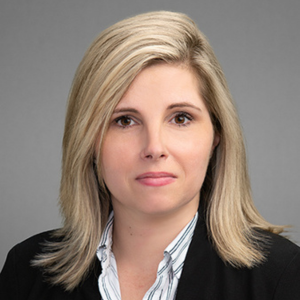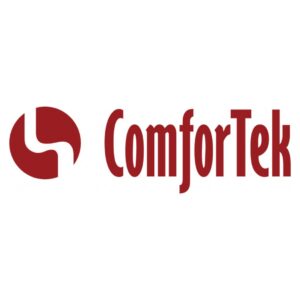Striving to Achieve Aging in Place
| American seniors are not “stuck in their ways”; they are simply comfortable with the familiar. And when they face the prospect of declining health, it’s only natural for them to want to remain in familiar environments to live out their golden years. Allowing residents to “age in place” isn’t always easy, though (ask any assisted living provider). Bill Reed and Lydia Lundberg, the husband/wife team behind Elite Care of Milwaukie, Oregon, think they have found the answer in Oatfield Estates. Their community of three small (about 12-resident) homes with live-in caregivers employs technology and design elements aimed at meeting their residents’ needs-both current and future. To learn more about how their residents age in place and what they view as “an alternative to assisted living,” Nursing Homes/Long Term Care Management Assistant Editor Douglas J. Edwards recently talked with Ms. Lundberg. Edwards: How do you use technology to help seniors age in place at Oatfield Estates? Lundberg: Although I could list many technologies, our first was the development of the location badge, which everyone wears. If a resident calls for help, the computer notifies the caregiver and signals where that resident is. This will also tell us how fast the call was answered and who responded to it. The badges are both IR (infrared) and RF (radio frequency). In order to get a location indoors, we have to use IR, as the IR signal does not travel through walls. RF is used outdoors, where IR wouldn’t work. Each room has one or more IR sensors in it. Every time someone with a badge walks into a room, the sensor sends a signal to a programmable logic controller (PLC). Also, each badge has a unique ID. This is how the computer will know who is calling for help where. We also place weight sensors under residents’ beds, with their permission, of course. The weight sensors are located under the posts of all four corners of the bed. They are strain gauges, with an accumulation unit. The weight is averaged and the signal is sent to the PLC. These tell us if residents are gaining or losing weight, restless in bed or getting up a lot during the night. With this information we generate graphs to identify trends in residents’ behavior, potential pain issues and even urinary tract infections (UTIs). It is not unusual to develop scheduled toileting programs for incontinence based on these data. The weight sensors are hardwired, the PLC is hardwired and so are the computers. The only wireless connections we are using at this time are the badges to the sensors. We chose this method to handle signals at a very high speed; it is reliable and cost-effective. Another electronic development has enhanced the life of those with dementia. As people develop symptoms of dementia, they might wander more at night, so we have a system that sends e-mail to the phone of the caregiver on duty when the resident gets out of bed. If the resident leaves his room, he trips a light beam, which sends a second e-mail to the phone. This will let the caregiver know to start looking for the resident. Our in-house programmers are in the process of writing the software so that a resident’s badge unlocks only the door to his room. Caregivers, who also wear badges, are allowed to enter any room. It’s like an electronic key and extremely easy to use, with or without dementia. Other things on our drawing board (to be initiated within three months) are electronic cues. For example, if residents have a pattern of getting up to use the bathroom at 3 a.m., but begin to forget to do so, and consequently have incontinence episodes, their bedroom lights will come on automatically at the proper time to remind them that it’s time to go to the bathroom. This would be programmed in the computer; the PLC would turn on the light at the appropriate time. All lights, fans, switches are wired back to the PLC and, therefore, can be operated remotely, as well as manually. Edwards: Aside from the technology, how does the design of your homes facilitate aging in place? Lundberg: We designed our homes quite differently from the traditional assisted living facility we’ve seen that has long hallways, few common areas, and amenities that are hard to use. These types of designs make it uninviting for residents to venture out into the common areas as they become more frail. Residential homes do not have long hallways. Neither do ours. Each home has about 11,000 square feet and three floors, serviced by an elevator. The caregiver suites are located on the lower level. The first floor has a living room surrounded by six suites. On the second floor is a big residential-style (resident-use) kitchen with a dining area and a family room that is also surrounded by six suites. We did this so residents could very quickly move from their rooms to a common area. We’ve also incorporated all the wiring into the design for future needs. Edwards: How do you provide for residents aging in place to the extent that their health declines and they need advanced medical care, such as that typical- ly provided in a skilled nursing facility? Lundberg: It depends on the situation. For some individuals, we have a home healthcare provider service. If the resident needs end-of-life care, we have hospice providers come in. Because we are not a skilled nursing facility, there have been situations in which a person has needed to be hospitalized for brief periods (such as stabilizing a person with diabetes) and/or has spent some time in a skilled nursing facility for rehabilitation, but then they quickly return to us. We have planned for the future, however, with wiring for some advanced care equipment, such as oxygen containers. We can’t promise that all our residents will never have to leave. There does come a time for some when you have to ask, “Is this really the best place for them? Is it the safest?” But a main foundation of our business is for residents to stay at Oatfield Estates as long as possible. If this means until end of life, we feel successful. Edwards: How do you explain to potential residents and families that “aging in place” doesn’t necessarily mean someone will stay at one of your homes until death? Lundberg: Our handbook outlines reasons a resident might have to leave. Even if Oregon law did not require that this information be disclosed, we would do so in fairness to our residents. Edwards: While you make a commitment to help residents age in place, do you require a similar commitment from residents (i.e., a fixed lease of some sort)? Lundberg: We have a month-to-month agreement because circumstances change. Edwards: You call your approach to senior housing an “alternative to assisted living.” What do you mean by this? Lundberg: We’re licensed as a residential care facility (RCF). We call ourselves an “alternative to assisted living” because we want the people who are considering a traditional assisted living environment to consider our approach as an option. People are not as familiar with RCFs, so calling ourselves an alternative to assisted living gives people an idea of the level of care we are equipped to provide. Edwards: Oatfield Estates uses a unique approach to staffing: live-in caregivers. What incentives do you offer staff to make such a life-changing career move? Lundberg: The majority of our caregivers have had a pretty hard lot in life. The incentive is that caregivers have a safe and comfortable place to live. It’s part of their compensation package; they do not pay extra for it. They can eat all the meals in the house if they choose, and so can their children. So the caregivers who are living there have a better standard of living than if they were working hourly and living on their own. Most of our caregivers are single mothers, so the children get the benefit of the “grandparents” they normally might not have. It’s a real intergenerational atmosphere; it’s not contrived by importing kids for an afternoon. We have one case in particular involving a 16-year-old young lady who has really bonded with some of the residents, and it has been good for her. Her experience at Oatfield Estates convinced her to go back to school after dropping out, and she even received an award for earning a 4.0 in all of her classes. Furthermore, she was selected to teach other students as to why they should stay in school. Edwards: Do you see the costs associated with your approach declining as more long-term care providers adopt this concept, or do you see it as a niche market for those who can afford it? Lundberg: At the moment it’s a niche market. We can lower the costs to residents in the future because we are streamlining our construction costs. Also, not all property is as expensive as the property Oatfield Estates occupies. Although technology itself can also reduce costs, human beings will always provide care. We have received a lot of attention and interest from several universities, Sandia National Lab and other research groups. That is because there is a big effort by several universities to design a “smart medical home” to allow seniors to stay in their own homes longer, and to help with the caregiver shortage. These efforts are still in conceptual stages. As far as we know, we are the only facility actually applying such existing technology in today’s situation. But without our philosophy of empowering the residents, the technology would not be worth- while. NH For more information, visit www.elite-care.com. |
I Advance Senior Care is the industry-leading source for practical, in-depth, business-building, and resident care information for owners, executives, administrators, and directors of nursing at assisted living communities, skilled nursing facilities, post-acute facilities, and continuing care retirement communities. The I Advance Senior Care editorial team and industry experts provide market analysis, strategic direction, policy commentary, clinical best-practices, business management, and technology breakthroughs.
I Advance Senior Care is part of the Institute for the Advancement of Senior Care and published by Plain-English Health Care.
Related Articles
Topics: Articles , Facility management , Housing











